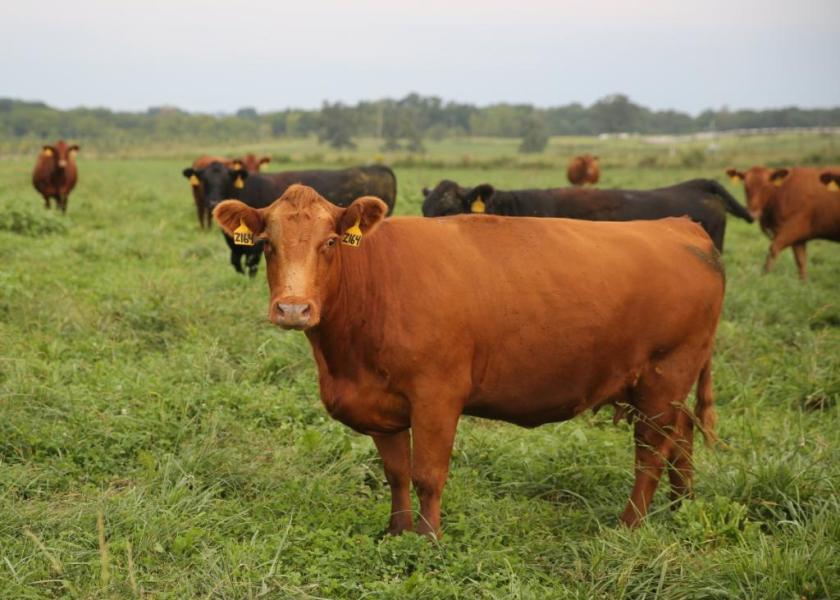Texas A&M Researchers Developing Oral Anthrax Vaccine

There may soon be a new weapon in the centuries-old battle against anthrax in wildlife thanks to work at the Texas A&M University College of Veterinary Medicine & Biomedical Sciences (CVMBS).
Anthrax, a disease caused by a bacterium called Bacillus anthracis, contaminates surface soil and grasses, where it may be ingested or inhaled by livestock or grazing wildlife. This is especially common in the western Texas Hill Country, where each year the disease kills livestock and wildlife.
While normally not an attention-grabbing problem, a spike of cases in 2019 made headlines around the state of Texas.
According to Dr. Jamie Benn Felix, a postdoctoral research associate in the Cook Wildlife Lab led by CVMBS Department of Veterinary Pathobiology’s (VTPB) Dr. Walt Cook, that spike may have been responsible for the deaths of more than 10,000 animals.
“If you assume the economic value for each animal was $1,000, which is probably extremely low given the number of exotic species on some of the ranches, you’re looking at an economic loss of $10 million in just a few months,” she said. “And given the problems with reporting cases, it could be significantly higher than that.”
The good news is that there is already a vaccine for anthrax, which many livestock owners administer annually. Unfortunately, it can only be administered with an injection that is time consuming for livestock and not feasible for wildlife.
With that in mind, Benn Felix and the Cook Wildlife Lab team, in collaboration with VTPB researchers Dr. Allison Rice-Ficht and Dr. Thomas Ficht, went to work to attempt to create a formulation to deliver the vaccine orally, which would allow for potential distribution to wildlife. She recently published the results of a pilot study in Nature and is now moving on to the next round of tests.
If successful, they will have developed the first effective oral vaccine against anthrax for wildlife.
“The preliminary results showed that this concept has potential, so now we are starting up a deer study and we’ll see where it goes from there,” Benn Felix said.
Anthrax is among the oldest enemies of microbiologists, and the current vaccination method — using what’s known as the Sterne strain — is basically the same as it was 85 years ago when Max Sterne developed it, so an oral vaccine has been a goal for some time.
In fact, in the past, many livestock owners trying to save time and effort would pour the vaccine over food, but previous testing by Benn Felix proved the ineffectiveness of this method.
The main issue with an oral vaccine is the ability to keep the bacteria alive in the gastrointestinal tract long enough and in the right amount to produce the desired immune activity in the animal. To that end, other efforts have been made with different strains of the bacteria and other mediums, but have thus far not proven effective.
Benn Felix’s approach is both simpler and more complex — simpler, because her approach uses the same strain that has been proven effective for decades, but more complex because of the use of a gel-like suspension.
“Our idea is that with this oral anthrax vaccine, we can get it into a bait of some sort and then easily vaccinate these animals,” Benn Felix said. “The formulation that we’re using is the same live strain of bacteria from the current commercial vaccine put into a gel-like substance.”
Benn Felix compared the release of the vaccine in the gel-like substance, technically known as alginate encapsulation, to a common gumball machine.
“It’s the same general idea as those big glass gumball machines you would see in the mall or a store, in which you put a quarter and get a single gumball out,” she said. “The gel holds a bunch of the live attenuated bacteria and it gradually releases some of that bacteria over time.”
Though they’re currently still working at a small scale, Benn Felix and her team are keeping an eye to the distant future and considering how this vaccine might be implemented at a larger scale.
One example they’re looking at is what Dr. Tonie Rocke did at the National Wildlife Health Center in Madison, Wisconsin, with a plague vaccine for prairie dogs.
“They put their vaccine into a bait that was flavored with peanut butter flavoring,” Benn Felix said. “That is the same general idea that we’re going for with this; we would just distribute the baits and then see how many were consumed, or we would have trail cameras that would see if there was any non-target species that ate any of it.
“There are a lot of things that would go into formulating the bait — making sure the vaccine is still stable and viable when it’s in the bait and then seeing how it would affect or be consumed by wildlife or any other wildlife we don’t want to have it,” she said.
Currently, one of Benn Felix’s biggest obstacles is a lack of data on exactly how much damage is caused by anthrax in wildlife in Texas. Her team is actively reaching out to ranchers, hunters and other groups across the state in an effort to increase the reporting on anthrax cases.
“If anthrax outbreaks aren’t reported, it appears as if it’s not an issue and the federal government and other organizations don’t prioritize funding,” Benn Felix said. “I didn’t realize this was even an issue until I moved to Texas. Reporting outbreaks will help generate critical data about this issue and demonstrate as a fact what we down here already know, which is that it’s a huge issue.”
By Aubrey Bloom, Texas A&M University College of Veterinary Medicine & Biomedical Sciences







